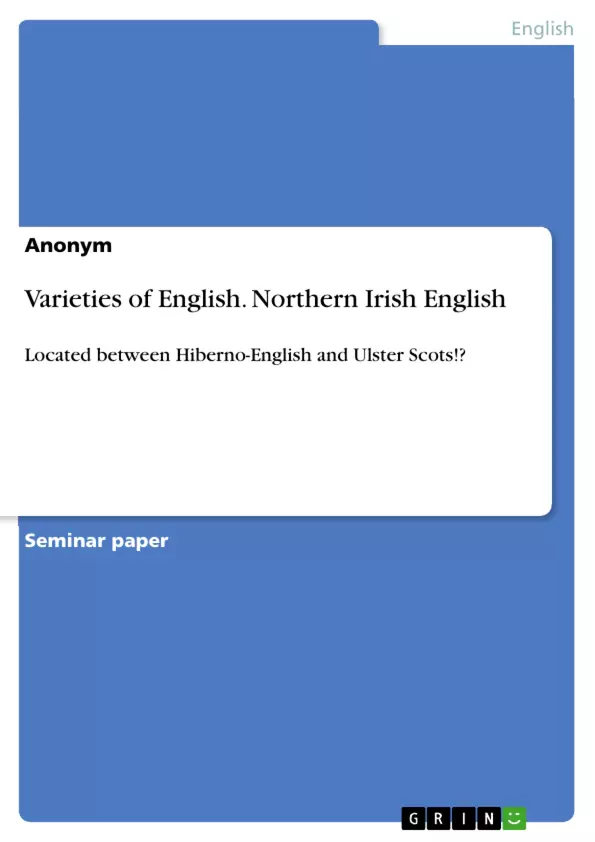This term paper investigates by how far Northern Irish English that consists of Mid Ulster English and South Ulster English is linguistically located between Hiberno English and the Ulster Scots dialects of English. Therefore Phonetics and Phonology, Morphology and Syntax and Lexis of these dialects are examined.
Inhaltsverzeichnis (Table of Contents)
- Introduction
- Features of Northern Irish English
- Phonetics and Phonology
- Vowels
- Consonants
- Morphosyntax
- Lexis
- Phonetics and Phonology
- Conclusion
Zielsetzung und Themenschwerpunkte (Objectives and Key Themes)
The main objective of this work is to explore the linguistic characteristics of Northern Irish English (NIE) and its position within the broader landscape of English dialects in Ireland. This includes examining the influence of historical migration patterns, specifically the impact of Ulster Scots, Hiberno-English, Scottish and Northern English, and Irish Gaelic, on the development of NIE. The author aims to determine whether NIE is indeed located linguistically between Ulster Scots and Hiberno-English, quantifying the degree of convergence between the three varieties.
- Linguistic diversity in Northern Ireland
- Historical influences on Northern Irish English
- Phonetic and phonological features of Northern Irish English
- Comparison of Northern Irish English with Ulster Scots and Hiberno-English
- Influence of substrate language (Irish Gaelic) on NIE
Zusammenfassung der Kapitel (Chapter Summaries)
- Introduction: This chapter provides an overview of Northern Ireland's linguistic landscape, highlighting the historical and social factors that have contributed to the development of its diverse dialects. The focus is on establishing the context for the study of NIE and its relationship with Ulster Scots and Hiberno-English.
- Features of Northern Irish English: This chapter delves into the phonetic and phonological characteristics of NIE, analyzing vowel quantity and quality. It examines the influence of the Scottish Vowel Length Rule (SVLR) on Mid Ulster English and its contrast with the phonemic vowel length of South Ulster English. The chapter also explores the impact of Ulster Scots, Hiberno-English, Scottish and Northern English, and Irish Gaelic on the morphology, syntax, and lexis of NIE.
Schlüsselwörter (Keywords)
Northern Irish English, Ulster Scots, Hiberno-English, phonetics, phonology, vowels, consonants, morphology, syntax, lexis, linguistic diversity, historical influences, substrate language, Irish Gaelic.
- Quote paper
- Anonym (Author), 2013, Varieties of English. Northern Irish English, Munich, GRIN Verlag, https://www.grin.com/document/212865



